Why NAD⁺ is Everywhere
In recent years, NAD⁺ (nicotinamide adenine dinucleotide) has become one of the most talked-about molecules in health and longevity circles. You’ll find it in supplement aisles, biohacker blogs, and even medical research labs. Proponents say it fuels our mitochondria, repairs DNA, and helps slow the ageing process.
But some critics argue that boosting NAD⁺ with supplements like NMN (nicotinamide mononucleotide) and NR (nicotinamide riboside) could disrupt methylation, aggravate histamine intolerance, and stress sulphur pathways.
So, what’s true, what’s exaggerated, and what’s just plain wrong? Let’s fact-check the most common claims.
What NAD⁺ Really Does
NAD⁺ is a coenzyme present in every cell. It acts as a metabolic currency, shuttling electrons in pathways that generate ATP. Beyond energy:
- DNA Repair: NAD⁺ fuels PARPs, enzymes that fix DNA damage.
- Sirtuin Activation: It activates longevity-related proteins (sirtuins) that regulate ageing and inflammation.
- Cell Signalling: NAD⁺ derivatives influence calcium signalling, immune responses, and circadian rhythm.
But here’s the catch: NAD⁺ declines with age. That’s why interest in NMN, NR, and other NAD⁺ precursors has exploded.
Myths surrounding NAD+, NMN & NR
Myth 1: NAD⁺ Supplements Drain Your Methylation
The claim: NAD⁺ boosters force the body to use up methyl groups, which could make histamine problems worse.
The science:
It’s true that when you take NMN or NR, your body produces nicotinamide, which is broken down by an enzyme (NNMT) that consumes methyl groups. Human studies show increased levels of methylated nicotinamide after NR, confirming this pathway. However, controlled clinical trials do not show harmful depletion of methylation. DNA methylation patterns remain unchanged in people taking NR.
The nuance:
Histamine can be cleared in two main ways: by HNMT (a methylation enzyme) or by DAO (an enzyme in the gut). Many histamine issues come from DAO deficiency, not methylation. For most people, ensuring a good intake of folate, B12, and choline is sufficient to meet their methylation needs.
Verdict: Partly true but overstated.
Myth 2: NAD⁺ Triggers Mast-Cell Degranulation and Histamine Release
The claim: NAD⁺ boosts energy and calcium inside cells, which causes mast cells to release histamine.
The science:
Mast-cell degranulation is indeed calcium-dependent. However, evidence suggests the opposite effect: NAD⁺ boosters reduce mast cell activity in animal models and protect against allergic reactions. There is no human data showing NMN or NR worsens histamine intolerance.
Verdict: Unsupported. The claim is speculative and conflicts with available research.
Myth 3: NAD⁺ Burdens Sulphur Pathways and enzymes (CBS, SUOX, SULT1A1) and Reduces Glutathione
The claim: Supplementing NAD⁺ stresses enzymes involved in sulphur metabolism, reducing glutathione and taurine.
The science:
Glutathione requires cysteine and NADPH, not NAD⁺ or methyl groups. Taurine is produced from cysteine, but methyl donors are not part of the process. No evidence shows that NAD⁺ precursors directly burden sulphur enzymes.
Verdict: False. This reflects a misunderstanding of biochemistry.
Myth 4: NAD⁺ Worsens Long COVID and Viral Reactivation
The claim: Infections like COVID-19 lower NAD⁺ , and supplementing it might worsen viral persistence or histamine-driven symptoms.
The science:
COVID-19 infection does lower NAD⁺ levels by activating DNA repair enzymes. Some viruses (like EBV) can reactivate after COVID, but there’s no proof that NAD⁺ supplementation drives this. In fact, early studies suggest that supporting NAD⁺ might help immunity and recovery. Clinical trials are currently testing NR in long COVID patients.
Verdict: Unproven and misleading. Current evidence points more to possible benefit than harm, but we need clinical trial results.
Safety and regulation
Multiple human trials indicate that NR can raise NAD⁺ and is generally well tolerated, even at high doses over several weeks, though longer-term data are still accruing.
In the United States, NMN’s supplement status has been under FDA review for several years; as of August 2025, petitions and litigation continue, and final clarity is pending. In the EU, NMN remains subject to Novel Food authorisation processes. This is regulatory nuance, not a safety verdict.
Overall judgement
Accurate: NAD⁺ declines with ageing; histamine can be methylated by HNMT; some people report idiosyncratic responses to NAD⁺ boosters.
Partly accurate but overstated: “Methylation drain” from NAD⁺ precursors is biochemically plausible via NNMT, yet convincing clinical evidence of harmful methyl-depletion at common doses is lacking.
Unsupported or incorrect: NAD⁺ boosters as a general trigger of mast-cell degranulation; the idea that NAD⁺ burdens sulphur pathways.
Practical, risk-aware takeaways
If someone has clear histamine-related symptoms and wants to try NMN or NR:
- Start low, go slow and monitor symptoms. Consider checking baseline homocysteine if there are concerns about methyl-group balance, and ensure adequate folate, B12 and choline intake rather than assuming depletion.
- Address the obvious first: sleep, alcohol moderation, low-histamine diet trial, and treatment of comorbid allergic disease or gut issues that can mimic histamine intolerance.
- Long COVID: evidence is still emerging. Trials of NR are ongoing. There is no strong evidence that NAD⁺ supplementation systematically worsens long-COVID, and a mechanistic case exists for potential benefit, but this remains to be proven in large trials.
Frequently Asked Questions About NAD⁺, NMN, and NR
Is NMN safe for people with histamine intolerance?
Most people with histamine intolerance tolerate NMN or NR without issues. Some concerns exist about methylation balance, since histamine is partly cleared via methylation. However, evidence shows that low doses combined with adequate B12, folate, and choline generally prevent problems. If you are sensitive, start with a smaller dose and monitor your response.
Can NAD⁺ boosters make histamine symptoms worse?
There is no strong evidence that NAD⁺ boosters like NMN or NR trigger histamine release. In fact, some animal studies suggest NAD⁺ support may stabilise mast cells rather than activate them. If you experience flushing, itching, or digestive issues, it may be from other factors like niacin metabolism, not NAD⁺ itself.
Do NMN and NR deplete methyl groups?
Yes, nicotinamide can be methylated, consuming SAMe. But clinical studies have not shown harmful depletion in humans at typical supplement doses. If you are worried, ensure your diet includes methyl donors: leafy greens (folate), eggs (choline), and fish or B12-rich foods.
What’s the difference between NMN and NR?
NMN (Nicotinamide Mononucleotide): One step closer to NAD⁺, converted directly inside cells.
NR (Nicotinamide Riboside): Converted into NMN first, then NAD⁺. Both raise NAD⁺ effectively in humans. The choice often comes down to cost, availability, and individual tolerance.
Does NAD⁺ help with long COVID or post-viral fatigue?
COVID-19 and other viral infections deplete NAD⁺. Supporting NAD⁺ may improve cellular repair and immune function. Early-stage trials are investigating NR for long COVID. Results are not final, but the theory suggests potential benefit, not harm. Always consult a doctor before starting supplements if you’re recovering from an infection.
Can NAD⁺ boosters cause side effects?
Most people tolerate NMN and NR well. Reported side effects are mild and may include: digestive discomfort, flushing (more common with niacin, less with NMN/NR), and Mild headaches in some sensitive users. Serious side effects have not been documented in clinical studies.
How can I naturally boost NAD⁺ without supplements?
You can boost your NAD+ levels naturally in various ways, such as exercising regularly and practising intermittent fasting.








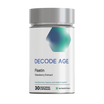
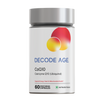

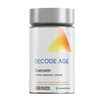

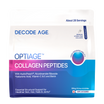

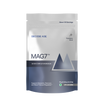
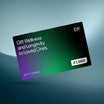
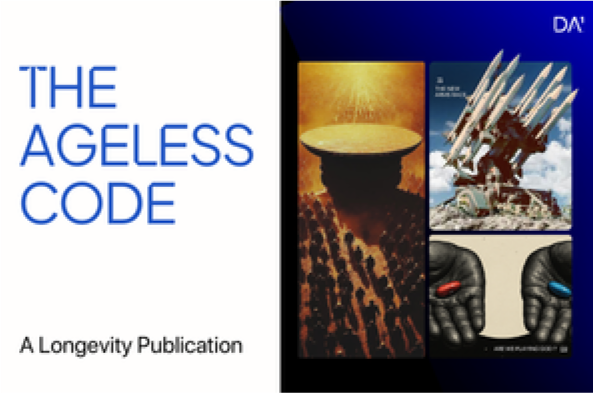



Leave a comment
All comments are moderated before being published.
This site is protected by hCaptcha and the hCaptcha Privacy Policy and Terms of Service apply.